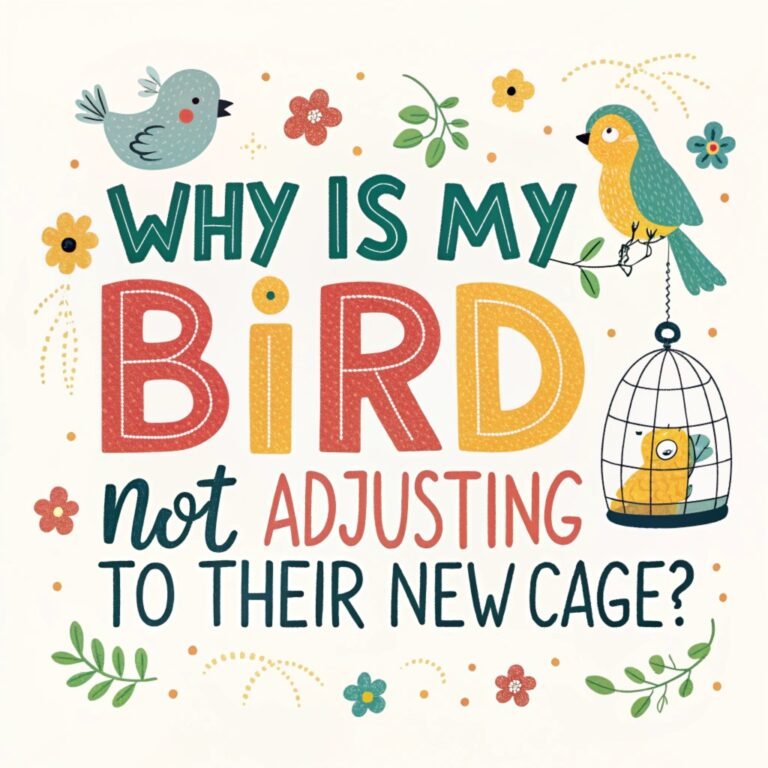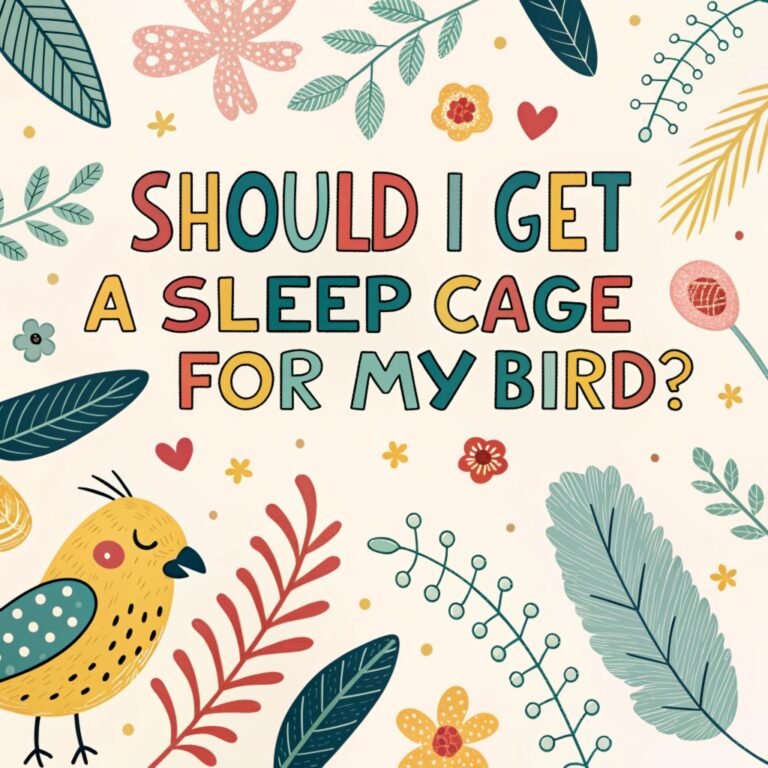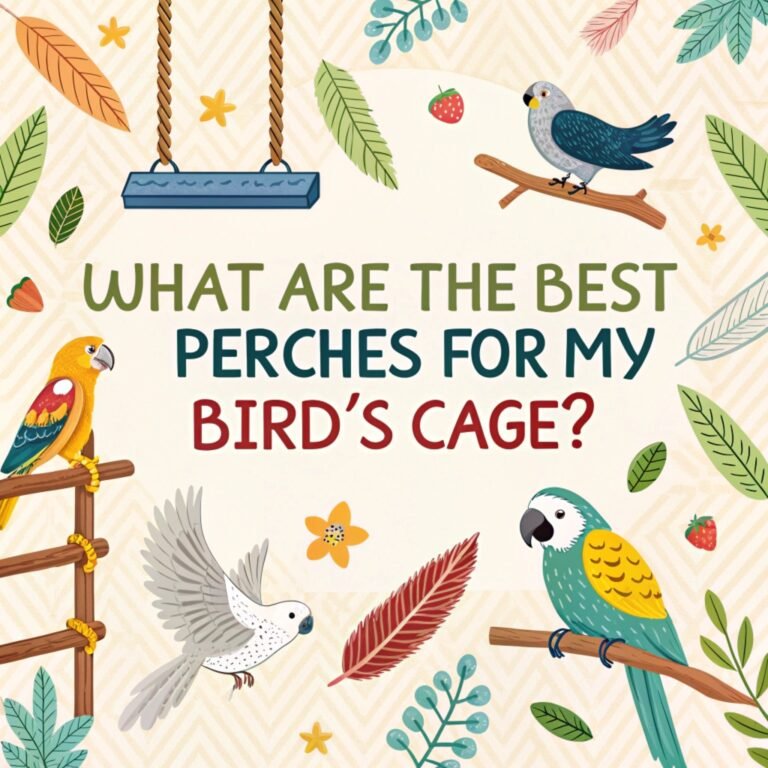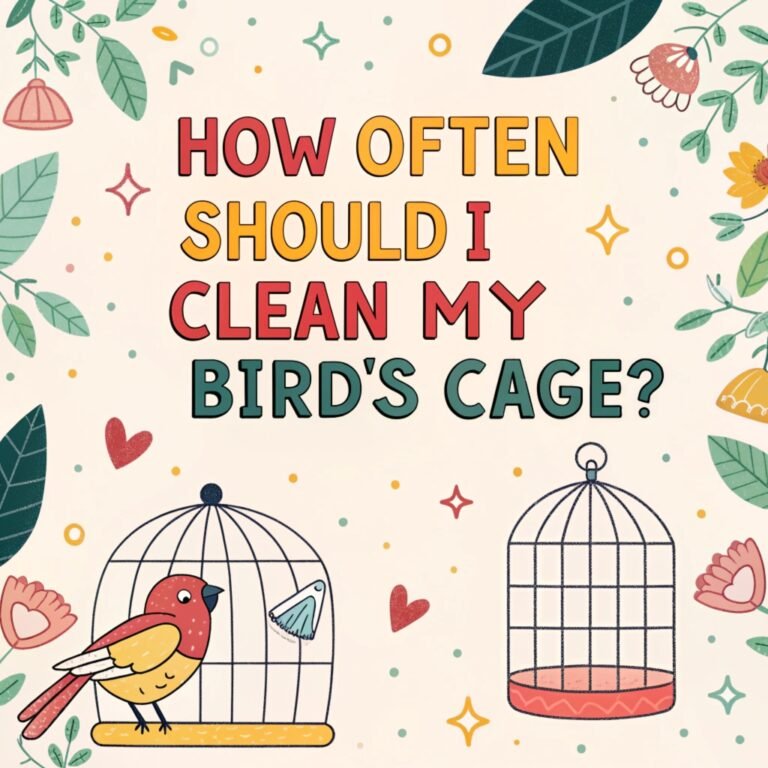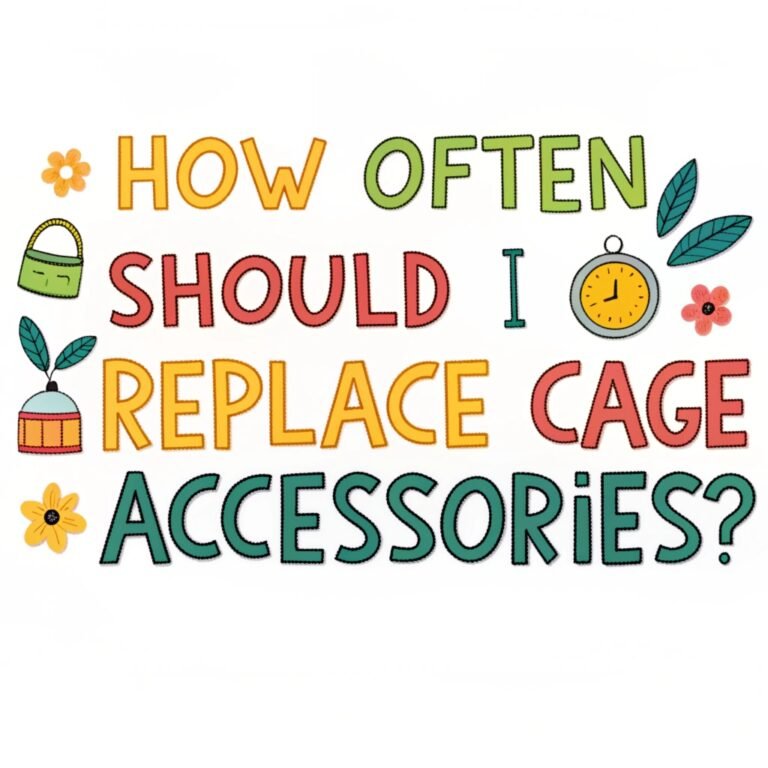How Much Space Do Multiple Birds Need In One Cage? – Optimal Health and Happiness
Bird enthusiasts often wonder, how much space do multiple birds need in one cage? Ensuring your feathered friends have enough room is crucial for their well-being and happiness.
In this guide, we will explore the ideal cage sizes for various bird species, helping you create a harmonious environment for your avian companions.
Whether you’re a new bird owner or looking to upgrade your current setup, understanding the spatial requirements of different birds is essential for their physical and mental health.
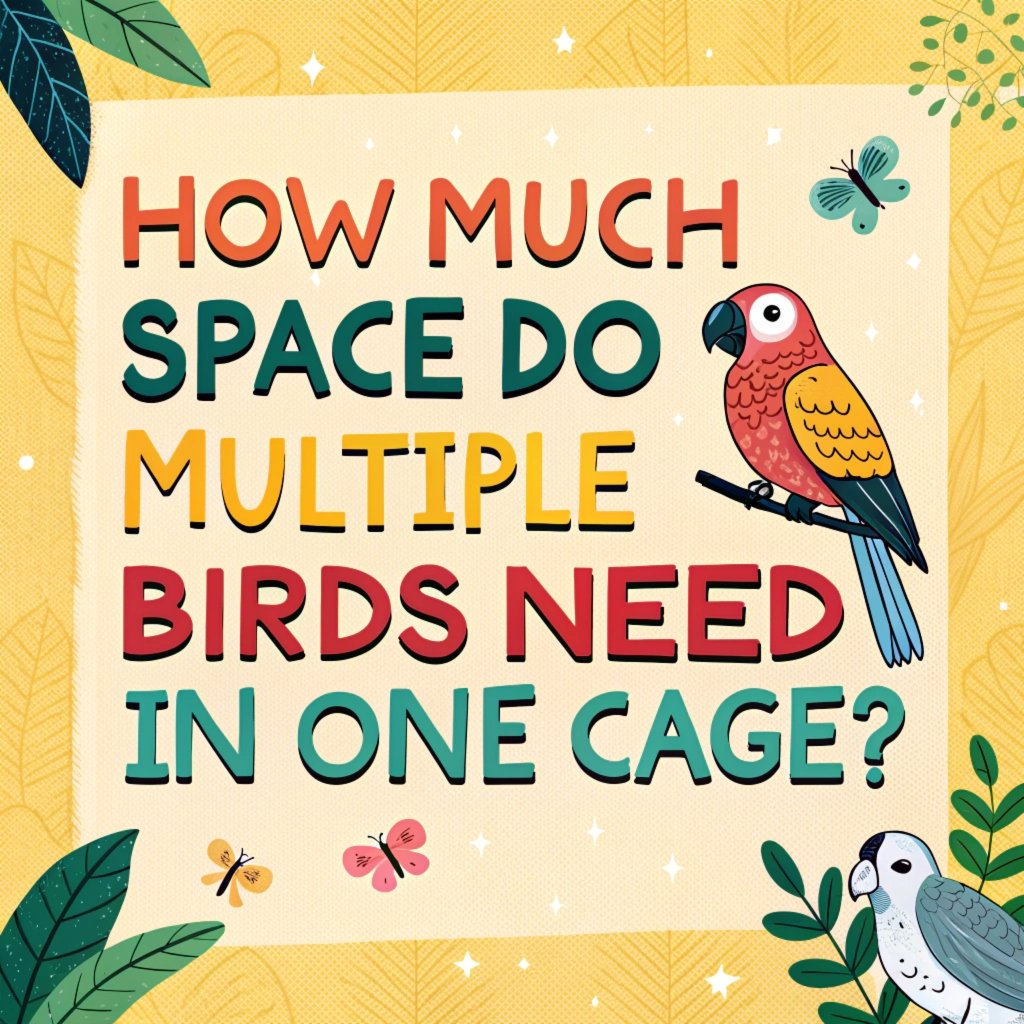
Key Takeaways:
- Space Requirements: Different bird species have varying space needs. Larger birds like macaws require significantly more room than smaller birds like finches.
- Cage Dimensions: A general rule is to provide at least 3-4 square feet per pair of small birds, while larger birds need more expansive enclosures.
- Behavioral Considerations: Birds need space to fly, stretch their wings, and engage in natural behaviors. Overcrowding can lead to stress and aggression.
- Species Compatibility: Mixing different bird species in one cage requires careful consideration of their space needs and social behaviors.
- Health Implications: Adequate space is essential for preventing health issues related to stress and lack of exercise.
- Cage Shape: Opt for rectangular cages that are wider than they are tall, as birds fly horizontally.
- Environmental Enrichment: Ensure the cage is equipped with perches, toys, and other enrichment items to keep birds mentally stimulated.
- Regular Cleaning: A spacious cage allows for easier maintenance and cleaning, promoting a healthier environment.
- Professional Advice: Consult avian veterinarians or bird care experts for personalized recommendations based on your specific bird species.
- Investment in Quality: Investing in a high-quality, spacious cage is a long-term commitment to your birds’ health and happiness.
Understanding Bird Space Needs: Why Cage Size Matters
The importance of cage size for birds cannot be overstated. Birds are active creatures that require ample space to move, fly, and express their natural behaviors.
A cage that’s too small can lead to physical and psychological stress, potentially resulting in health issues and behavioral problems.
When considering space needs, it’s crucial to think about the bird’s wingspan. As a general rule, the cage should be at least 1.5 to 2 times the bird’s wingspan in width and depth.
This allows the bird to stretch its wings fully without touching the sides of the cage.
However, this is just a starting point. Larger cages provide more opportunities for exercise, play, and mental stimulation. Birds housed in spacious environments are typically healthier, happier, and more active.
They’re less likely to develop stereotypic behaviors like feather plucking or excessive screaming, which are often signs of stress or boredom.
Species-Specific Space Requirements: Tailoring Cage Size to Your Birds
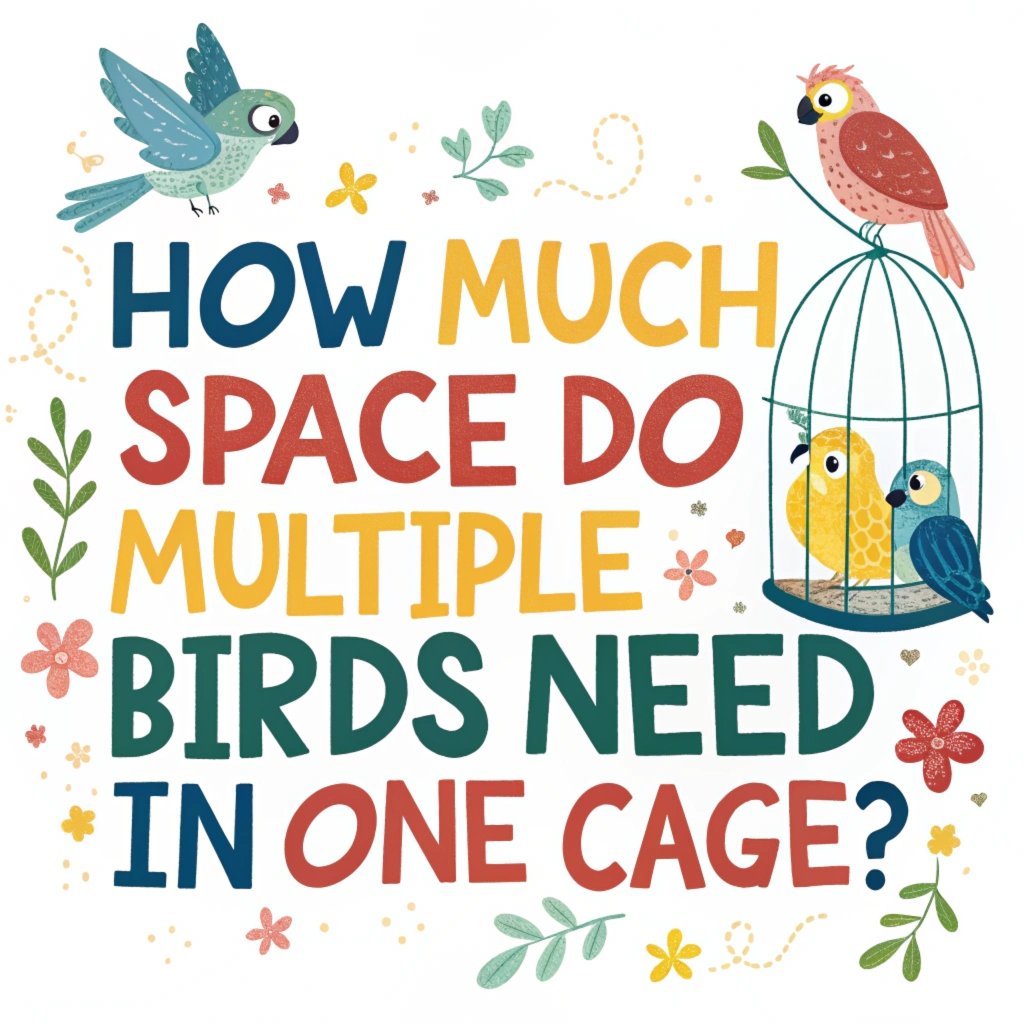
Different bird species have varying space requirements based on their size, activity level, and natural behaviors.
Small birds like budgies or finches may be content in a cage measuring about 18x18x24 inches per pair, but larger cages are always better.
Medium-sized birds such as cockatiels or conures need more space, ideally a cage at least 24x24x36 inches.
For larger parrots like African greys or macaws, cages should be significantly bigger, with dimensions of at least 36x48x48 inches or larger.
It’s important to note that these are minimum recommendations, and providing more space is always beneficial.
When housing multiple birds, the cage size should increase proportionally. For example, if you’re keeping two pairs of finches, you’d need at least double the space recommended for a single pair.
The Impact of Cage Size on Bird Behavior: Ensuring a Stress-Free Environment
The size of a bird’s cage has a profound impact on its behavior and overall well-being. A spacious cage allows birds to engage in natural behaviors such as flying, climbing, and foraging, which are essential for their physical and mental health.
When birds have adequate space, they’re more likely to exhibit positive behaviors like singing, playing with toys, and interacting positively with their owners.
Conversely, a cage that’s too small can lead to stress-induced behaviors such as feather plucking, excessive screaming, or aggression.
A larger cage also provides opportunities for environmental enrichment. You can add various perches, swings, and toys to create a stimulating environment that keeps your bird mentally engaged.
This is crucial for preventing boredom and the development of destructive habits.
Mixing Bird Species: How to Accommodate Different Space Needs
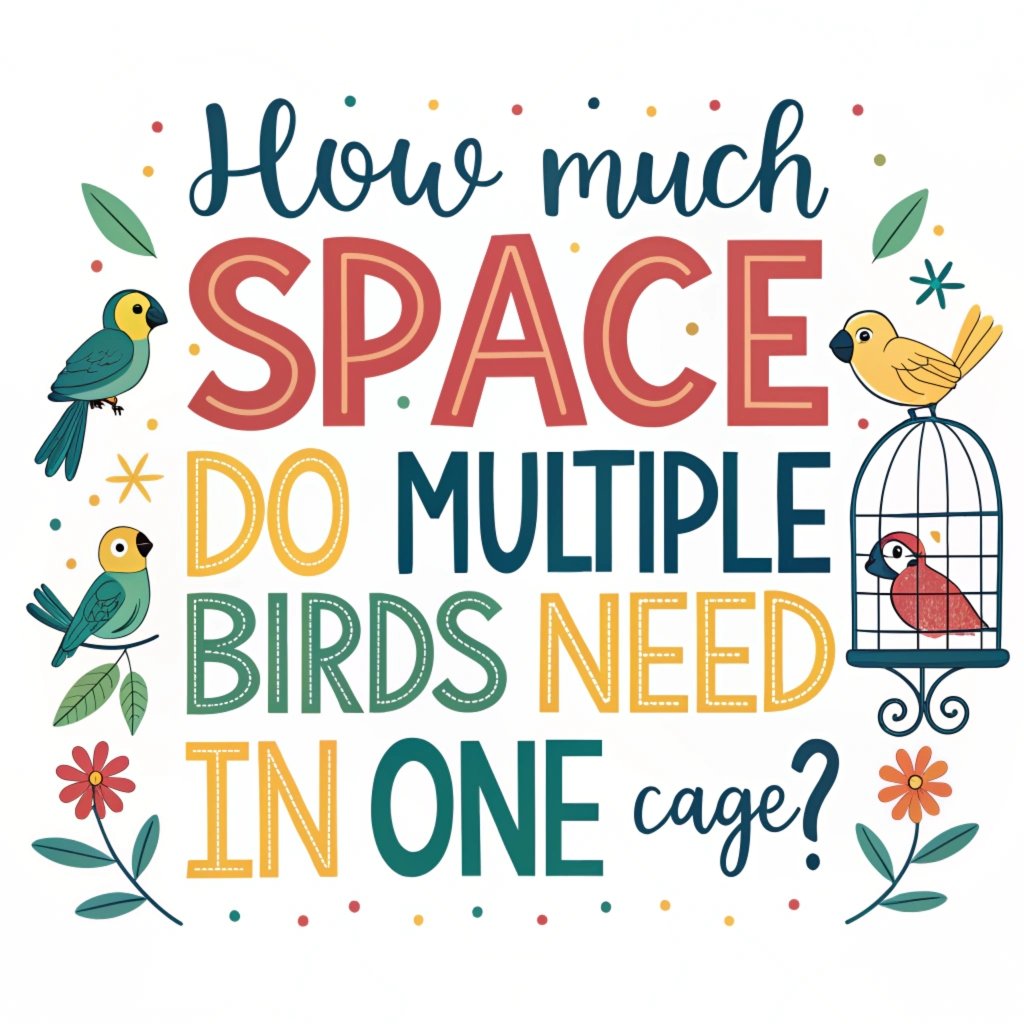
When housing multiple bird species together, it’s crucial to consider the space requirements and social dynamics of each species. While some birds can coexist harmoniously, others may require separate living quarters.
The key is to provide enough space for each bird to have its own territory and to avoid conflicts.
For example, if you’re mixing budgies and cockatiels, you’ll need a cage large enough to accommodate the size difference and allow each species to have its own space.
A good rule of thumb is to increase the cage size by 50% for each additional bird. When mixing species, it’s also important to consider their activity levels and behaviors. More active birds may need extra space to fly and play, while less active species might prefer quiet corners.
Health Benefits of Adequate Space: Preventing Stress and Disease
Providing adequate space for your birds is not just about comfort; it’s a crucial factor in maintaining their physical and mental health.
A spacious cage allows birds to engage in natural behaviors like flying and stretching their wings, which are essential for cardiovascular health and muscle strength.
Sufficient space also reduces stress levels in birds. Stress can compromise a bird’s immune system, making them more susceptible to diseases.
In a larger cage, birds have the freedom to move away from potential stressors, whether it’s a noisy area of the room or a cage mate they need a break from.
Adequate space also promotes better respiratory health. In a larger cage, there’s better air circulation, which helps prevent the buildup of dust and dander that can irritate a bird’s sensitive respiratory system.
Choosing the Right Cage Shape: Why Width Matters More Than Height
When selecting a cage for your birds, the shape is just as important as the size. While many commercially available cages are tall and narrow, this design doesn’t actually cater to birds’ natural behaviors.
Birds typically fly horizontally, not vertically, so a cage that’s wider than it is tall is generally more suitable.
A wider cage allows birds to engage in short flights, which is crucial for their physical exercise and mental stimulation. The ideal cage shape for most birds is rectangular, with the length being the longest dimension.
Avoid round cages as they can be disorienting for birds and don’t provide corners for them to retreat to when they feel the need for security.
Square cages can be suitable if they provide enough width, but rectangular cages typically offer the best use of space.
Enhancing Bird Life with Enrichment: Toys, Perches, and More
Creating a stimulating environment within your bird’s cage is crucial for their mental and physical well-being. Enrichment goes beyond just providing space; it’s about filling that space with items that encourage natural behaviors and provide mental stimulation.
Toys play a vital role in keeping birds entertained and preventing boredom. Offer a variety of toys that allow for different types of play, such as foraging toys, puzzle toys, and destructible toys for chewing. Rotate toys regularly to maintain interest.
Perches are another essential element of cage enrichment. Provide perches of varying diameters and textures to exercise your bird’s feet and help prevent foot problems.
Natural branch perches are excellent as they mimic the variety found in nature.
Maintaining a Clean and Spacious Cage: Tips for Bird Owners
Keeping your bird’s cage clean and hygienic is crucial for their health and well-being. A spacious cage not only provides more room for your bird but also makes the cleaning process easier and more effective.
Start by establishing a daily cleaning routine. This should include changing the liner at the bottom of the cage, cleaning food and water dishes, and wiping down perches and toys.
Use bird-safe cleaning products to avoid exposing your feathered friend to harmful chemicals.
A weekly deep clean is also essential. Remove all items from the cage and thoroughly clean every surface, including the bars and any crevices. This is a good time to inspect the cage for any damage or wear that might need addressing.
Consulting Experts: When to Seek Professional Advice on Bird Housing
While this guide provides general information on bird housing, there are times when seeking professional advice is crucial. Avian veterinarians and experienced bird breeders can offer valuable insights tailored to your specific situation.
Consider consulting an expert if you’re housing multiple species together, as they can advise on compatibility and specific space requirements.
If you notice any behavioral changes in your birds, such as increased aggression or signs of stress, a professional can help determine if the cage setup is a contributing factor.
Remember, avian experts stay up-to-date with the latest research and best practices in bird care.
They can provide guidance on new enrichment techniques, innovative cage designs, and emerging health considerations related to housing.
Investing in Quality Cages: Long-Term Benefits for Your Birds
Investing in a high-quality cage is one of the most important decisions you can make for your bird’s well-being.
While it may be tempting to opt for a cheaper option, a well-constructed, spacious cage offers numerous long-term benefits.
Quality cages are typically made from durable materials like stainless steel or powder-coated metal, which resist rust and are easy to clean.
These materials also withstand the wear and tear of daily use, including your bird’s beak and claws.
High-quality cages often feature thoughtful design elements like easy-access doors, removable trays for cleaning, and secure locks that prevent escapes.
These features not only make your life easier but also contribute to your bird’s safety and comfort.
Common Mistakes in Bird Housing: Avoiding Overcrowding and Poor Design
When it comes to bird housing, several common mistakes can negatively impact your feathered friends’ well-being.
One of the most frequent errors is overcrowding. It’s easy to underestimate how much space birds need, especially when they’re small.
Another mistake is choosing cages based on aesthetic appeal rather than functionality. While a decorative cage might look nice in your home, it may not provide the best environment for your bird. Poor cage design is another issue to watch out for.
Many bird owners make the mistake of placing perches incorrectly, often putting them directly above food and water dishes, leading to contamination.
Inadequate cleaning provisions, such as cages without removable trays, can make maintenance difficult and lead to unhygienic conditions.
Creating a Harmonious Bird Environment: Balancing Space and Social Needs
Creating a harmonious environment for your birds involves more than just providing adequate space; it’s about balancing their physical needs with their social requirements.
Birds are social creatures, and many species thrive on interaction, whether with their own kind or with humans.
When housing multiple birds, it’s crucial to consider their social dynamics. Some species are naturally gregarious and enjoy living in groups, while others may prefer more solitary arrangements with occasional interaction.
The cage setup should allow for both social interaction and privacy. Include multiple perches and feeding stations to reduce competition and allow birds to choose their preferred spots.
For species that form pair bonds, provide nesting areas or hiding spots where they can retreat for quiet time.
Frequently Asked Questions
How much space does a single small bird need?
A single small bird, such as a budgie or finch, needs a cage that’s at least 18x18x24 inches. However, larger is always better, and a cage measuring 24x24x24 inches or more would provide a more comfortable living space.
Can different bird species share the same cage?
While some bird species can coexist peacefully, it’s generally recommended to house different species separately. If you do mix species, ensure the cage is large enough to accommodate their different needs and provide separate feeding areas to prevent conflicts.
How often should I clean my bird’s cage?
Daily spot cleaning is essential, which includes changing food and water, and removing droppings. A thorough cleaning should be done weekly, involving washing all cage components and replacing perches and toys as needed.
What’s the ideal cage shape for most birds?
Rectangular cages that are wider than they are tall are ideal for most birds. This shape allows for horizontal flight, which is more natural for birds, and provides more usable space for perches and toys.
How can I tell if my bird’s cage is too small?
Signs that your bird’s cage might be too small include:
- Inability to fully stretch its wings
- Lack of exercise or movement
- Aggressive or stressed behavior
- Feather plucking or other self-destructive behaviors
- Inability to add sufficient toys or perches
Is it okay to keep my bird in a round cage?
Round cages are generally not recommended for birds. They can be disorienting and don’t provide corners for birds to retreat to when they feel insecure. Rectangular or square cages are much better options.
How many toys should I put in my bird’s cage?
The number of toys depends on the cage size and bird species, but a good rule is to have 3-4 toys available at any time. Rotate toys regularly to maintain interest and prevent boredom.
Can I keep multiple birds of the same species in one cage?
Yes, you can keep multiple birds of the same species together, provided the cage is large enough. Increase the cage size by about 50% for each additional bird to ensure everyone has enough space.
What type of perches should I use in my bird’s cage?
Use a variety of perches with different diameters and textures. Natural wood perches, rope perches, and textured plastic perches are all good options. Avoid using only smooth, uniform perches as these can lead to foot problems.
How high should I place my bird’s cage?
Place the cage at about eye level or slightly below. This helps your bird feel secure and part of the family. Avoid placing the cage too high or in corners where the bird might feel isolated.

Hello, I’m Amelia White, the founder of birdsfanatic.com. As a lifelong bird enthusiast and spiritual seeker, I’ve always been fascinated by the mystical connections between birds and the human experience. On this site, I share my knowledge and insights into the symbolic meanings and spiritual significance of various bird species, exploring their roles in mythology, folklore, and cultural traditions. Join me on this journey into the world of birds, where we’ll discover the hidden wisdom and guidance that these magnificent creatures have to offer.


